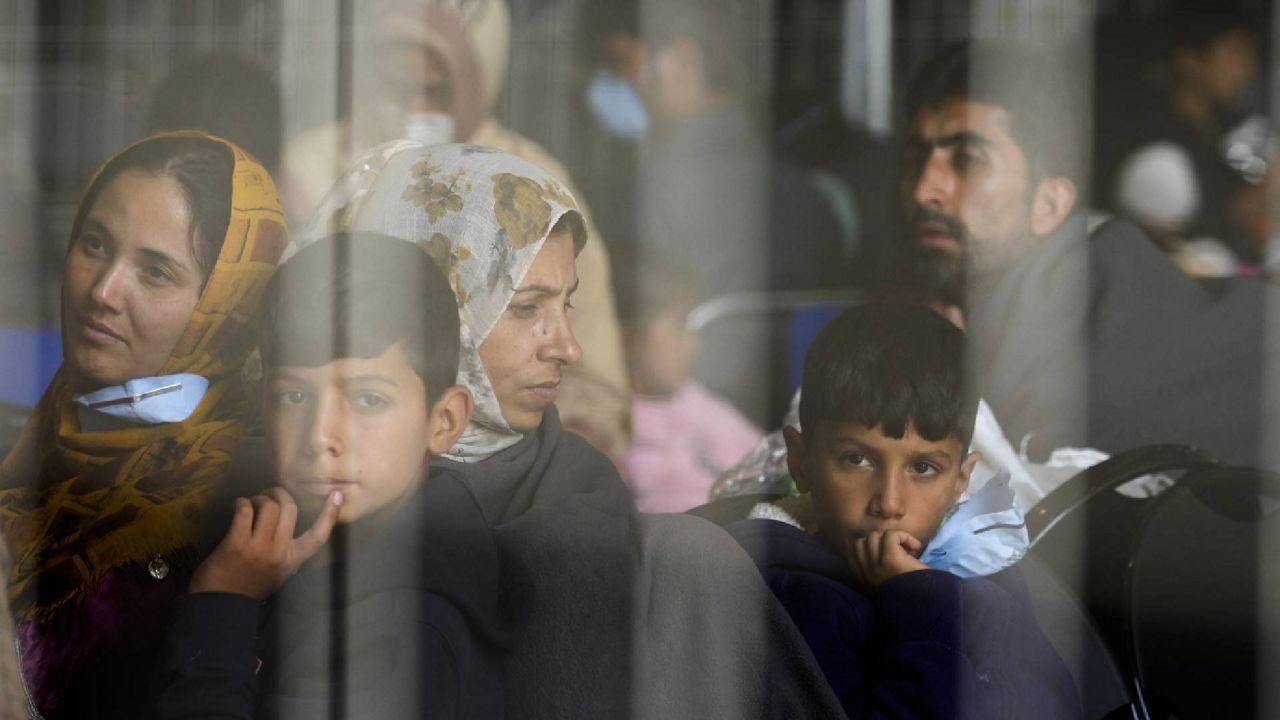The Biden administration on Monday launched a new guide for Afghans in the U.S. hoping to reunite with their family members still stuck overseas, though it’s missing a new form intended to streamline reunions for Afghan evacuees with temporary status.
The new landing page is a centralized place on the State Department website for Afghans to find the appropriate forms and instructions on how to apply to bring their family members — spouses, children and in some cases siblings — from Afghanistan to the United States.
But the page lacks a new form in the works for about 77,000 Afghans who entered the country with humanitarian parole, which accounts for the majority of the people evacuated after Kabul fell to the Taliban last year.
"This form will be published at a later date," the website reads.
Parolees still have temporary status, which is different from Afghans who are U.S. citizens, residents or received a visa because of their work with American troops during the war.
Shawn Van Diver, who leads the AfghanEvac coalition and works on the issue with State Department officials, has been pushing for a new portal for parolees to bring their family members since early 2022.
He said he and fellow advocates have “mixed feelings” about the page launched Monday.
“We are happy with how the information is presented here,” he told Spectrum News. “But quite frankly, like, the parolee form shouldn't be that hard. Our immigration system is why the form is hard.”
Currently, parolees who have family overseas have to flag their relatives through email to the State Department or through an unofficial form put together by AfghanEvac.
VanDiver credited U.S. officials for their work on the guide launched Monday. He said he knows the family reunification form for parolees is coming soon, but Afghans regularly tell him it’s their number one worry.
“‘I need to get my family. And they’re still stuck,’” VanDiver said he hears. “I'm worried about my family. My family is in trouble.”
The same Afghan evacuees are also stuck in another web of uncertainty: Will they get permanent status in the U.S. at all when their parole runs out next year?
Months-long efforts from veterans and advocates, including an ongoing demonstration outside the U.S. Capitol, have failed to push Congress to pass legislation that would secure evacuees’ status. They’ve been so far relegated to the backlogged asylum system, though many of them have just over nine months left to secure status.
“It’s the uncertainty that is killing people,” VanDiver said.
The family reunification guide announced Monday directs Afghans to the appropriate forms for their relatives to fill out and instructs them how to flag the applications to immigration officials. It’s meant to simplify the process for families still separated after the chaotic U.S. withdrawal from Afghanistan last August.
The State Department also highlights its potential to help transport family members out of Afghanistan, as officials have continued to do over the last year at varying paces.
Most Afghans who qualify are flown from Kabul to Doha, Qatar, where officials have hosted a U.S. processing center for several months. The flights are currently paused for the World Cup but are set to resume in early 2023.



